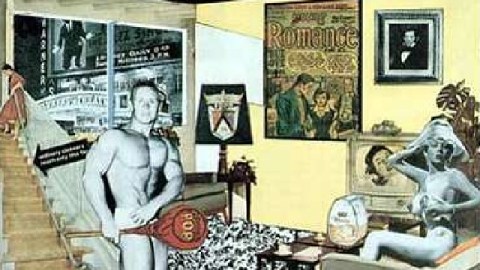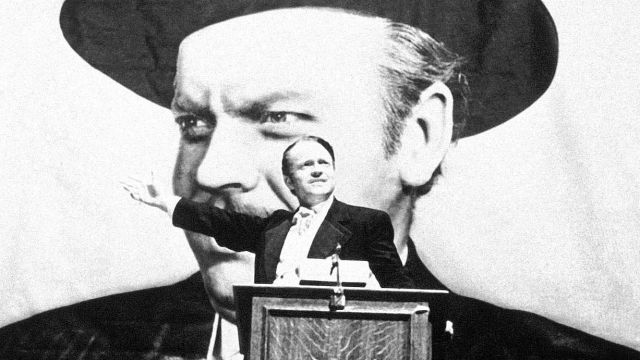Richard Hamilton: The Real King of Pop Art?

Mention the school of Pop Art to casual art lovers and you’ll immediately get the response, “Andy Warhol.” Warhol sucks up most of the oxygen in any discussion of Pop, with Roy Lichtenstein, Jasper Johns, and a few others getting in the rare gasp. With the death at 89 years of age of Richard Hamilton, whose 1956 collage Just what is it that makes today’s homes so different, so appealing? (detail shown above) many consider to be the first Pop Art work, it might be the right time to ask if Hamilton, and not Warhol, is the true king of Pop Art.
Pop Art popped up around the world in various guises generally after the end of World War II. The “peace dividend,” only slightly offset by the cost of the simmering Cold War, led to a proliferation of commercial advertising that continues to this day. Swimming in this sea of commercialism, Hamilton, a devotee of Dada and Surrealism and, above all else, an acolyte of Duchamp, took the lessons of those movements and applied them to life in the mid-1950s. Just what is it that makes today’s homes so different, so appealing? literally elevates kitsch to high art, as symbolized by the framed comic book cover against the wall. The body builder on the left and naked woman on the right embody the commodification of the human form into just another business transaction—something to be marketed to relentlessly, idealized in the name of selling deodorant and toothpaste. The collage collects all the ideas of pre-World War II anti-establishment art and updates them for the very different post-war world.
What separates Hamilton from Warhol, Lichtenstein, and other contenders for the King of Pop Art is that ability to take those complex ideas and apply them to the cultural debris of a less serious time. Warhol rightfully earns credit for his appropriation of commercial advertising in Campbell’s Soup Cans and for his rechanneling of the star power of Marilyn Monroe, Elvis Presley, and others to his own purposes. Above all, Warhol’s superhuman self-promotional skills set him above the others. By extending his “15 minutes of fame” across the decades, even after death, Warhol overshadowed and almost erased the name of Hamilton.
At the time of his death, Hamilton was cooperating with curators on a major retrospective of his work to tour his native England and America in 2013. Perhaps Hamilton’s reputation will rise to the top during that retrospective, reducing Warhol not to obscurity, but perhaps to a more justified position as the artist and personality he truly was. Until then, the King of Pop Art is dead. Long live the King.





